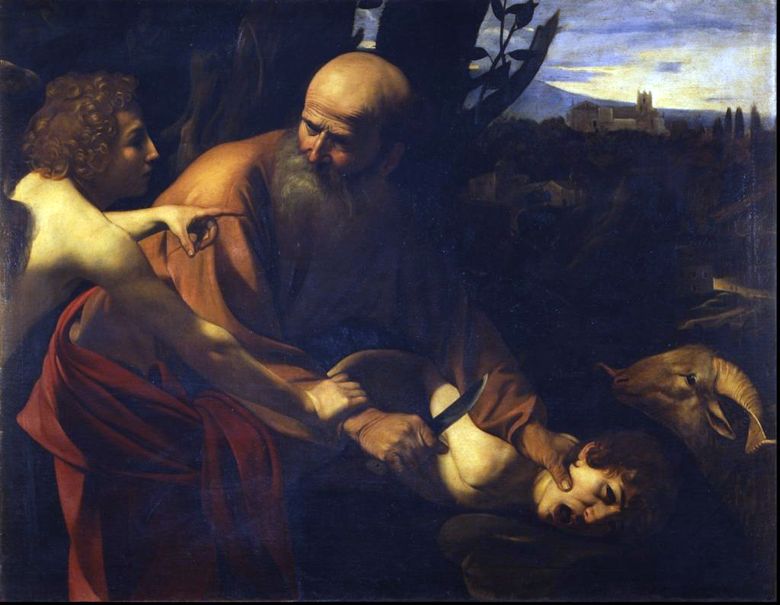
Growing up in the work of Caravaggio dramatism fully manifested itself in the work presented, especially as it contributed to its plot. The painting was written for Cardinal Maffeo Barberini, whose patronage the artist used. He portrayed the moment when the biblical old man Abraham was going to sacrifice his son Isaac, as ordered, in order to make sure of the depth of his faith, God.
In the shortest period of time, Caravaggio managed to contain several tense actions performed by the characters: the father, holding the head of the bound son by his hand, raised a knife over him, the son screams with fear, but the angel sent by God stops Abraham and points him at the sacrificial ram.
The picture is so full of emotions that even the angel looks worried, and the lamb with an anxious gaze pulls his head, as if praying to put him in Isaac’s place. A horizontally rotating composition stretches in time all the actions of the characters, forcing both them and the viewer to experience the drama presented here even more strongly.
Not without reason Baroque paintings, the ancestor and one of the brightest representatives of which was Caravaggio, was inherent in the tension of passions. But the artist did not simply depict human experiences at a particular instant – he went further, deepening them psychologically. Thus, Abraham’s face reflects the struggling inner faith and father’s love. Plunging into the dusk, the landscape in the background intensifies the drama, but the city on the mountain and the bright sky highlight the happy outcome, which is about to come.
 Le sacrifice d’Isaac – Michelangelo Merisi da Caravaggio
Le sacrifice d’Isaac – Michelangelo Merisi da Caravaggio El sacrificio de Isaac – Michelangelo Merisi da Caravaggio
El sacrificio de Isaac – Michelangelo Merisi da Caravaggio Patient Bacchus by Michelangelo Merisi and Caravaggio
Patient Bacchus by Michelangelo Merisi and Caravaggio Musicians by Michelangelo Merisi and Caravaggio
Musicians by Michelangelo Merisi and Caravaggio Schulers by Michelangelo Merisi and Caravaggio
Schulers by Michelangelo Merisi and Caravaggio Saint Matthew and the Angel by Michelangelo Merisi and Caravaggio
Saint Matthew and the Angel by Michelangelo Merisi and Caravaggio St. John the Baptist by Michelangelo Merisi and Caravaggio
St. John the Baptist by Michelangelo Merisi and Caravaggio Martyrdom of St. Matthew by Michelangelo Merisi and Caravaggio
Martyrdom of St. Matthew by Michelangelo Merisi and Caravaggio